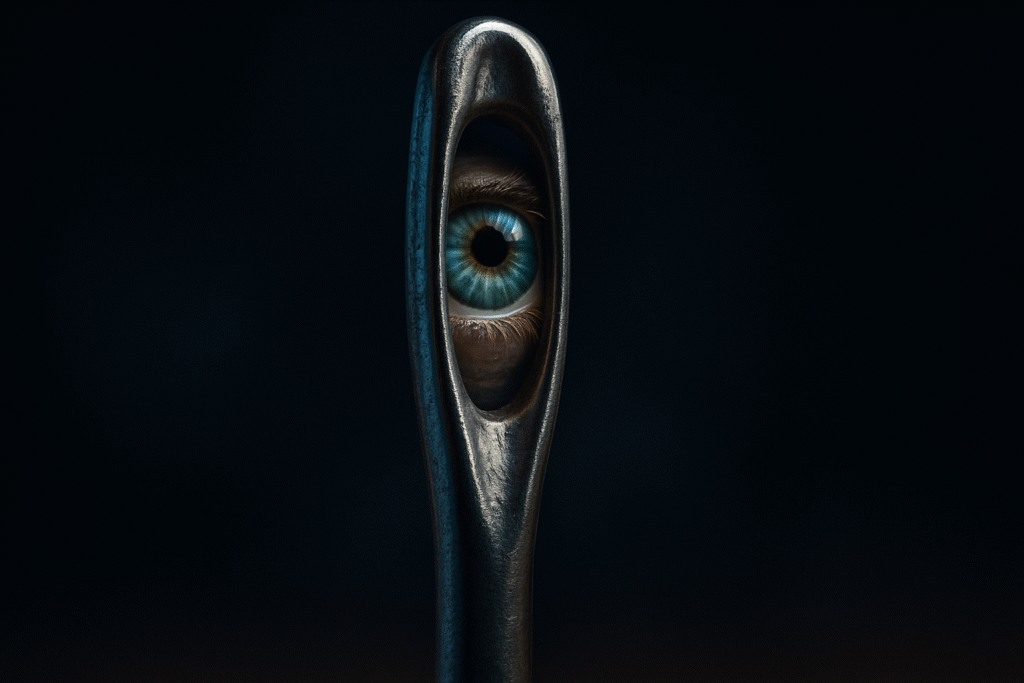The Narrow Path of Insight
The image of a needle’s eye is often interpreted as a symbol of impossibility or spiritual difficulty, famously evoked in religious texts. But for Eidoism, it represents something different: the passage from illusion to form, from conditioned reaction to conscious structure. Eidoism does not ask you to believe—it asks you to see. And the passage to that seeing is as narrow as a needle’s eye, not because it is hard, but because it excludes everything that cannot pass: recognition, performance, self-deception. What remains is form. What passes through is necessity.

The Problem
Belief Is a Structure of Reward
Belief is a mental shortcut—an efficient way for the brain to reduce uncertainty, usually by attaching to socially reinforced narratives. Beliefs are often chosen not for their truth but for their ability to provide security, status, or belonging. Eidoism recognizes belief as a form of recognition loop compliance: we believe what aligns us with tribes, roles, and rewards. But Eidoism begins exactly where belief ends: with the recognition of the loop itself. This recognition is not a leap of faith—it is an observation. It does not demand assent; it invites scrutiny.
The Problem
Recognition Is the Gatekeeper
In most systems, belief is the threshold you cross to join the ideology. You must accept certain truths, symbols, or narratives to belong. But Eidoism has no such gate. It doesn’t ask what you believe, but why you need to believe at all. It is not a system of external answers, but a dismantling of internal conditioning. Like the eye of a needle, Eidoism filters out the excess—the inflation of identity, the craving for validation, the compulsion to perform. What remains is usable clarity. Not truth delivered from above, but truth emerging from within.
The Problem
The Loop Is Not a Dogma
Central to Eidoism is the concept of the Recognition Loop: a neural mechanism by which humans unconsciously seek reinforcement through social signals. This is not a doctrine to be accepted. It is a mirror to be tested. Anyone can observe the loop in themselves—posting online, defending opinions, even performing kindness—and sense the subtle reward of being seen, liked, or praised. Eidoism begins when this feedback loop becomes visible. No belief is required to see a mirror. Only honesty. Only attention. That’s why the transformation in Eidoism is not ideological—it’s perceptual.
The Problem
From Belief to Observation
The needle’s eye is not a punishment. It is a filter. To pass through, one must shed weight: expectations, stories, borrowed identities. This is not about asceticism or denial—it is about realignment. Eidoism does not lead you into belief. It leads you into alignment with form: the underlying structure of life when performance is stripped away. Just as design can be beautiful when function dictates form, life becomes coherent when recognition no longer dictates behavior. The world does not need more believers. It needs more observers. Not those who join a system, but those who see their own.

